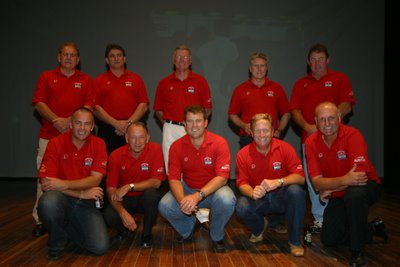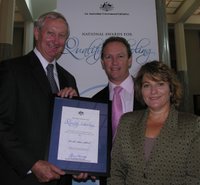Young councillors take a stand

LONGREACH teenagers are bouncing back from criticism regarding their behaviour and have formed a youth council to raise money for the foundering youth club and to organise more activities for the town’s young people.
Fourteen young people attended the first meeting of the council held last Thursday night which elected a mayor and committee.
New mayor Nina Ah Wong said she was tired of hearing people talk about the town’s youth in a negative way.
“We’re not that bad,” she protested.
“There is too much stereotyping of young people who really need more activities and things to do in this town,” fellow committee member Angela Skaines agreed.
“It would definitely be a shame if we lost the youth club and hopefully we can stop this from happening.”
“The youth council is a way we can help young people in this town by planning activities that will give them something to do,” another committee member, Adam Borton, said.
“The issue of keeping kids occupied is a fairly big problem, especially in smaller towns like Longreach where it’s more noticeable.
“But there are the same problems in bigger places like Rockhampton where I used to live.
“Youth in general are all over the place.”
Ms Ah Wong explained that with so many young people feeling that more activities for youth were needed, the main aim of the council would be to raise money for the youth club.
“We’ve decided that April will be Save the Youth Club month,” she said.
“We want the youth club to stay open and hopefully we can raise a few thousand dollars towards this goal.”
Youth council members have plenty of ideas about how to do this, such as walking the streets with signs and banners while collecting donations and selling raffle tickets.
“We also hope to hold a youth dance, a car wash and Easter activities like an egg hunt, egg-throwing contest and a costume competition,” Ms Ah Wong said.
The youth council is determined to organise all these events and many others with as little adult input as possible.
“We want the council and its ideas to have a youth perspective,” Ms Ah Wong said.
“The meeting last Thursday was excellent and I never expected so many people to show up.
“We now plan to hold regular meetings every Monday at 5.30pm at the youth club and anyone aged between 13 and 25 years old are welcome to come along.
“But anyone who wants to join the council has to make a serious commitment to work together for the youth of this town.”
Longreach Shire Council youth development officer Wendy Hunt was pleased about the formation of the council and especially with its aim to save the youth club.
“They’re discussing youth concerns amongst themselves and even starting to talk about how they can raise these concerns with the government,” she said.
“With the kids themselves taking an interest in the club and its future, a lot more might happen.”
Youth council members will hold a street walk tomorrow from 9am and anyone is welcome to volunteer their time and help out.
A youth dance will also be held next Thursday at 7.30pm at the youth club, with an entry fee of $3.
For more information on the youth council and its activities, contact Nina Ah Wong on 0437 643 954.





 THE Federal Government has presented Tambo State School with an award for its fostering of student identity and academic performance.
THE Federal Government has presented Tambo State School with an award for its fostering of student identity and academic performance.